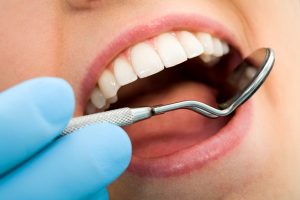Veneers are a great way to enhance the appearance of your teeth. While veneers can be made of either porcelain or composite resin, porcelain is the more popular choice. The use of porcelain for veneers tends to yield a result that looks more like a natural tooth and lasts longer than resin. But even the most durable veneers break. In these cases, it may not always be possible for your dentist to repair a veneer. They may just need to replace it.
How long does a veneer last?
 There isn’t a perfect way to determine how long your veneers will last, but there are general guidelines. These will give you an idea about how long your veneers should last.
There isn’t a perfect way to determine how long your veneers will last, but there are general guidelines. These will give you an idea about how long your veneers should last.
Resin veneers are good because dentists don’t need to shave away as much enamel. But they usually don’t look as natural as porcelain ones. Because composite resin veneers stain and chip easily, they don’t last as long. When properly taken care of, composite resin veneers can last anywhere from four to eight years.
Once you damage a composite resin veneer, it usually has to be redone. Because resin is prone to staining, patients may need to redo the surrounding teeth. This is so the new veneer isn’t noticeably lighter than the nearby teeth.
Porcelain veneers are more durable and look more natural than composite resin veneers. They tend to last anywhere from five to twenty years, although the average porcelain veneer lasts about ten years. When porcelain veneers do get damaged, it may not be possible to repair a veneer. But there are cases where porcelain veneers can successfully be repaired.
How to repair porcelain veneers
How a porcelain veneer is repaired will depend on the kind of damage to the veneer. There are cases where it’s better to replace the veneer, but even in many of those cases, repairing the damage is still possible.
Repairing small chips and fractures
In some cases, it’s possible for dentists to buff away the damage to a veneer. This treatment also involves evening out the surrounding veneers so that it still looks natural. Although this is a good way to fix porcelain veneers, it can only happen right after the initial damage.
Repair a veneer with a large chip
The most common way to repair a veneer that has a chip is by making use of composite to fill in the chipped space. Success for this procedure varies depending on the quality of resin used and the skill of your dentist. In some cases, the composite stains much faster than the rest of the veneer, leading to a non-uniform appearance. Even so, this method is sure to prolong the use of a veneer, especially in cases where patients are unwilling or unable to replace it.

In some cases the whole veneer might debond from a tooth’s surface without breaking, in these cases it’s possible for dentists to rebond the dental veneer to a tooth.
Repair a debonded veneer
In some cases the whole veneer might debond from a tooth’s surface without breaking. In these cases it’s possible for dentists to rebond the dental veneer to a tooth without much effort. If your veneer debonded, you should inspect it to see if it’s still whole. A veneer that came off without any damage will look like a tooth when you view it from the convex side. Be extremely careful while handling a veneer that came off, as broken veneers that have debonded can’t usually be rebonded to your teeth.
Unfortunately, there are cases when a debonded veneer won’t stay in place after being reattached. When that happens, it’s usually best to replace the veneer altogether.
Every broken veneer is a unique case, and it’s well worth it to take a debonded veneer to your local dentist. Let them decide if it can still be repaired. Schedule an appointment to get expert advice.
To prevent damage to your veneers from occurring in the first place, many dentists recommend wearing a protective mouth guard at night. Refraining from eating particularly hard foods is another great way to keep your veneers for years.


